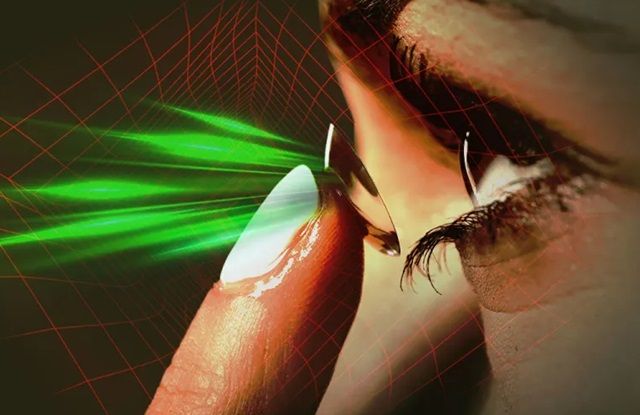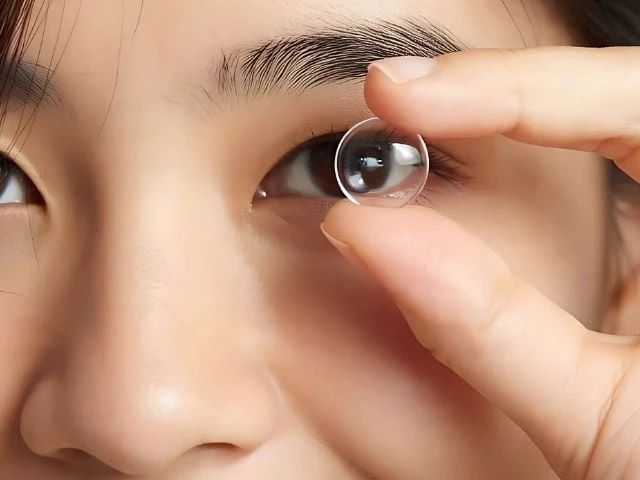It might sound like something from the most recent science fiction movie. However, researchers have created contact lenses that enable night vision. These lenses enable the wearer to see a variety of infrared wavelengths and don’t need a power source, unlike night vision goggles. They even function better while people’s eyes are closed, which is an additional futuristic twist. Supervision is what the researchers think the contact lenses might provide. Professor Tion, a senior author from the University of Science and Technology in

China stated, “Our research opens up the potential for non-invasive wearable devices to give people supervision. This material has a wide range of immediate potential uses. For instance, information could be transmitted in security, rescue, encryption, or anti-counterfeiting settings using flickering infrared light. The visible light spectrum which includes wavelengths ranging from around 380 to 700 metres is the range of light waves that humans can see. Nanoparticles that absorb invisible light and transform it to visible wavelengths are used in contact lens technology. The detection of near infrared light or infrared light in the 800160 nanometer range just beyond what is now visible to humans is made possible by these nanoparticles. The scientists hoped to create a less intrusive alternative, but they had already demonstrated that injecting these nanoparticles into the retina of mice allows them to see infrared. The nano particles were mixed with flexible non-toxic polymers found in conventional soft contact lenses to make the contact lenses. According to tests, the contact lenses enabled people to recognize flashing infrared signals that resembled Morse code in complete darkness because it eliminated any interference from light on the typical vision spectrum.
They were even able to see better when their eyes were closed. Professor Schwest stated, “It’s very obvious. The subject cannot see anything without the contact lenses, but they can clearly see the flickering of the infrared light when they put them on. The range of frequencies that make up the electromagnetic spectrum is known as the radiation spectrum. It spans wavelengths that are a fraction of the size of an atomic nucleus to thousands of miles. Electromagnetic wave bands include Additionally, we discovered that the subject’s ability to perceive this flashing information is enhanced when they close their eyes.
This is because there is less interference from visible light because near infrared light penetrates the eyelid more effectively than visible light. The contact lenses were modified further so that the nanoparticles could color code various infrared wavelengths. By way of illustration, infrared wavelengths of 980 nm were transformed into blue light, 88 nm into green light, and 1,532 nm into red light. Wearers were able to take in more information thanks to this. According to the researchers, it may also one day enable colorblind individuals to perceive wavelengths that they would not otherwise be able to.
According to Professor Schwe, this technology could make the invisible visible for colorblind people by converting red visible light into something like green visible light. The researchers are trying to improve the sensitivity of the nanoparticles so that they can detect lower amounts of infrared light. As the contact lenses can currently only detect infrared radiation projected from an LED light source, we hope to create a contact lens with higher sensitivity and more precise spatial resolution in the future by collaborating with material scientists and optical experts. Professor Schwest stated, “Light plays a particularly critical role in conveying a considerable amount of external information for living creatures to perceive the world.” The scientists wrote in the journal cell, “However, only a small portion of the electromagnetic spectrum is visible light to mammals. This indicates that more than half of the energy from solar radiation, which manifests as infrared light, is invisible to mammals.
Here we present wearable biocompatible near infrared upconversion contact lenses with appropriate optical characteristics. People who wore the contact lenses were able to distinguish between near infrared pattern images and recognize near infrared temporal information like Morse code with accuracy. Interestingly, when their eyes were closed, people wearing the contact lenses showed better discrimination of near infrared light compared with visible light. Humans and other animals can see thanks to a range of intricate structures in their eyes. Like a camera lens, the pupil contracts to restrict the amount of light that can enter. Cones and rods, often known as photoreceptors, are located in the retina of the majority of animals’ eyes. Rods are sensitive to low light levels, allowing for a grayscale between black and white, whereas cones enable people to sense color. A variety of light wavelengths are absorbed by the three main types of cones found in humans and many other animals. Cones of short, medium, and long wavelengths provide a range of vision that includes the visible light spectrum.

This contains hues with wavelengths between 390 to 700 nm which fall between red and blue. Tetrachromacy is a mutation that causes some species such as many birds to have four cones rather than three. This makes it possible for animals to perceive light with a remarkably small wavelength which is typically thought of as UV light. Light triggers these photoreceptors which then change shape to produce an electrical signal. The optic nerve then transmits electrical signals to the brain.
The brain then combines signals from both optic nerves at a location known as the optic kayazm where it compares the two images. Animals are able to perceive depth and distance from objects in their area of view. Because of this.







